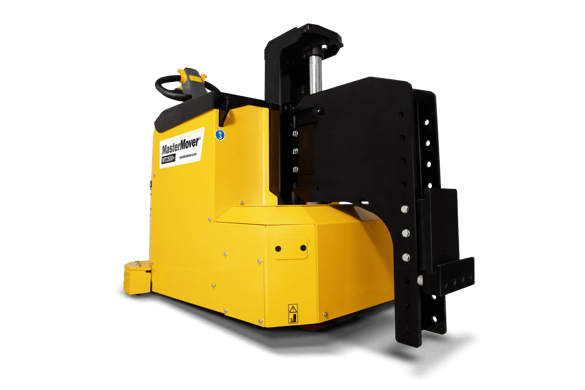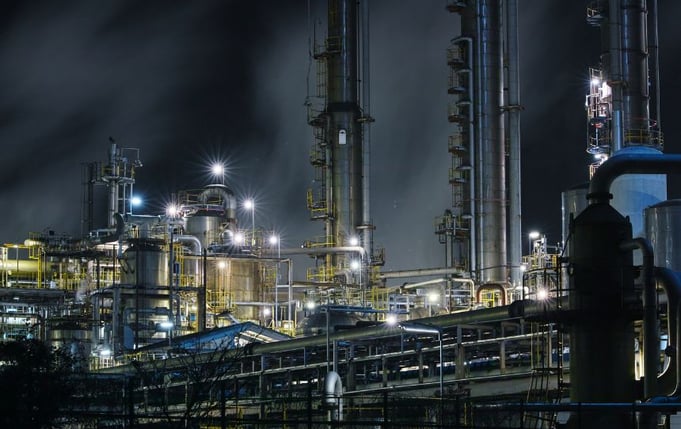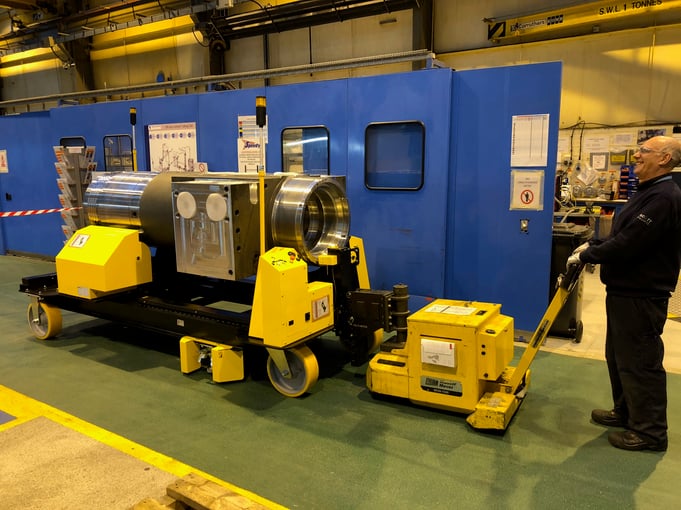Moving Heavy Loads At Chapelcross: Tugs Move 55 Ton Nuclear Flasks

Engineers at a UK-based nuclear power station are using electric tuggers to assist in the movement of nuclear flasks, a critical stage in the decommissioning of the site. Not only have the tuggers provided a cost-effective solution to moving the flasks around in very confined spaces but the risk of handling-related injuries and accidents to staff has also been reduced.
About Chapelcross
Located in Dumfriesshire, Scotland, Chapelcross is a four-reactor nuclear power station with a total of eight, 30MW turbines. At full power when operational, the station produced enough electricity to supply every home in South West Scotland, the Borders and Cumbria. The Chapelcross site covers 92 hectares and employs more than 400 people. The station has been undergoing decommissioning since 2004.
Magnox North is the management and operations contractor responsible for the day-to-day operation of the site under contract to the Nuclear Decommissioning Authority. The immediate priority in terms of the phased decommissioning program is hazard reduction via the safe and efficient removal of all spent nuclear fuel from the four reactors and storage ponds, which is then despatched to Sellafield for reprocessing.
The Application & Challenges
Two MasterMover pedestrian tuggers are now being used in two different reactor chambers to pull large, heavy nuclear flasks from the reactors to the flask handling bays. The flasks, which contain spent nuclear fuel, act as shipping containers for transporting active nuclear materials.
To move a flask from the reactor chamber to the flask-handling bay at Chapelcross, the integrated flask and bogie first need to be guided along the track. The flask then has to be moved to a ‘flask holding area’ (still inside the same secure room) where the lid is torqued on the flask. Until the lid is securely in place, the flask cannot leave this area.
The problem for engineers at Chapelcross is a lack of space in which to maneuver the flask and bogie in order to be able to secure the lid in place. The combined weight of the flask, spent fuel and bogie is more than 55 tons. The flask holding area immediately outside the reactor chamber is very small (approximately 3.5m2).
Stephen Bennie, Fuel Route Systems Support Engineer at Chapelcross commented:
“Prior to investing in the tuggers from MasterMover, we knew we needed some kind of electric-operated handling system to help us move the flasks around in such a tight space."
"We did consider the possibility of motorizing the bogie system ourselves, but we decided that the cost and time to design, manufacture and install this type of system was prohibitive. We couldn’t use a forklift or locomotive in the flask-handling bay as this area must remain a radioactive contamination-controlled area. Until the lid has been torqued and lid seal pressure tested, only then is a locomotive able to transport the assembly from the building. So we decided to look at alternative solutions.” Stephen continued.
The Process
MasterMover identified their MasterTug range as the best tool for the job. The MasterTug can pull, push and steer wheeled loads up to 33,000 lbs., which is sufficient to move the flask and bogie along the guided rails. Traction is the key to moving heavy loads and so the MasterTug is designed to get all the traction it requires by using a coupling system to transfer load weight to the drive wheel. For Magnox North, MasterMover removed the tiller arm from the tugger and devised a special coupling system between the tugger and the flask bogie, which enables the machine to be connected and disconnected easily and safely.
 In order to ascertain which MasterTug model was suitable for the application, a thorough upfront application engineering and technical evaluation was carried out. This involved a MasterMover engineer visiting the Chapelcross site on several occasions in order to discuss the application in more detail. This exercise involved taking load cell measurements on-site and calculating rolling resistance on the flask and bogie system.
In order to ascertain which MasterTug model was suitable for the application, a thorough upfront application engineering and technical evaluation was carried out. This involved a MasterMover engineer visiting the Chapelcross site on several occasions in order to discuss the application in more detail. This exercise involved taking load cell measurements on-site and calculating rolling resistance on the flask and bogie system.
MasterMover has its own in-house design and technical team and so was able to come up with alternative solutions for the application. Advice and guidance were also provided to Magnox North, including how the female couplings would integrate with the flask bogie. MasterMover also provided technical drawings and other engineering documents as and when required by the customer.
The Solution
After concluding that the MT20/1500 (Now MT1500+) was the most suitable tugger for the job, a single Magnox North operator is now able to pull the flask and bogie from the reactor chamber along the guided rails to any point within the flask holding area. This is achieved by using the tugger either on the front connection point or the side connection point. Once this movement is complete, the machine is then stored and charged until such time as the flask is needed for processing through the reactor chamber.
Complete Control in Hazardous Areas
Stephen Bennie states: “With such tight spaces to work in, the compactness of the electric tugger and its ability to move heavy loads around within these confined areas, were decisive factors in our choice of electric tugger.”
With such tight spaces to work in, the compactness of the electric tugger and its ability to move heavy loads around within these confined areas, were decisive factors in our choice of electric tugger.
Stephen Bennie, Fuel Route Systems Support EngineerChapelcross
There are added improvements in Health & Safety too, as Stephen Bennie explains: “The braking on the machine means that the risk of an operator being accidentally crushed against a door while pulling the flask is now eliminated. Obviously, pushing the flask along the rails rather than pulling it has also helped to reduce this risk too.”
“More than 30 operators have now been trained to use the electric tugger here at Chapelcross. We’ve never had any issues when using the tuggers and they are performing exactly as we want them to,” he concludes.

